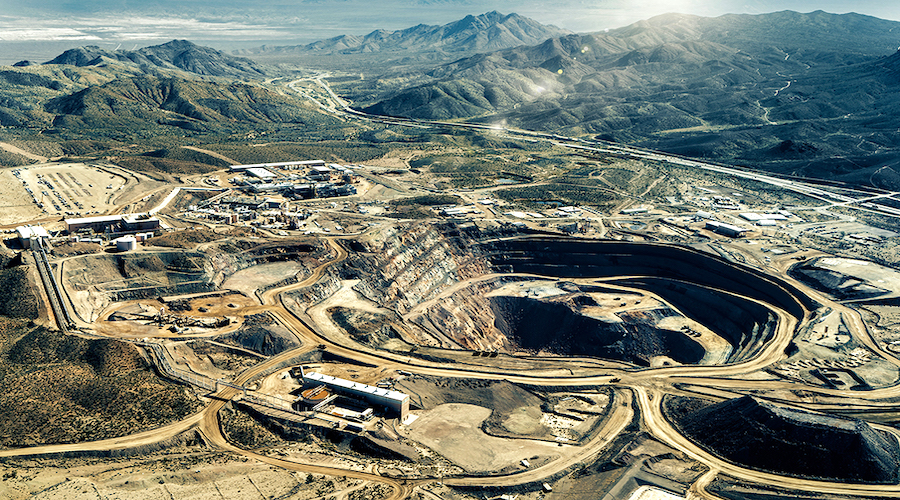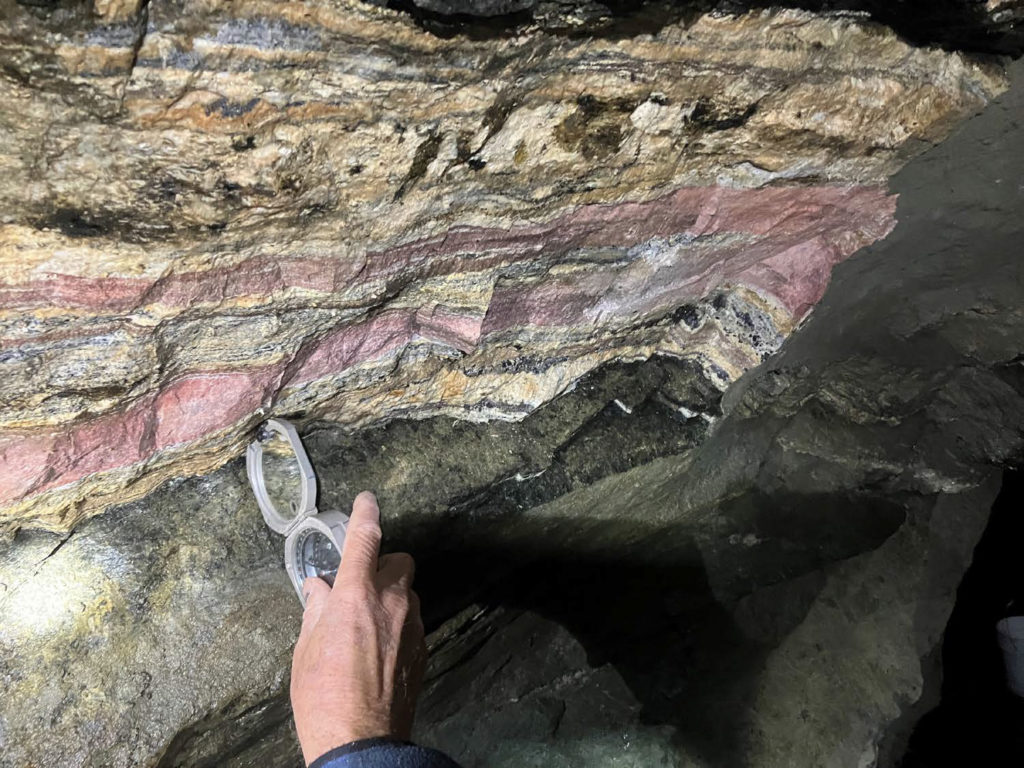Cecilia Jamasmie | February 22, 2023 |

Mountain Pass mine and processing facility, California.

Mountain Pass mine and processing facility, California.
(Image courtesy of MP Materials.)
US rare earths producer MP Materials (NYSE: MP) has inked a deal with Sumitomo Corp. to supply the Japanese giant with some key elements, such as neodymium and praseodymium, helping the trading house bypass China in EV rare-earth supply chains.

MP Materials, owner of the Mountain Pass mine in California, will sell material from its separation plant to Sumitomo for distribution in Japan.
Until now, output from Mountain Pass has been sent to China for processing, with Japanese companies purchasing from there.
Under the deal, MP Materials — the only rare-earths producer in the US — will handle not only mining, but also smelting of ores and separating various elements.
Such output will be further refined by companies in Vietnam and the Philippines, before being shipped to Japanese magnet makers for use in final products.
The new supply chain arrangement, set to start operating in July, backs up the US and its allies’ plans to cut China’s role in their critical supply chains.
Sumitomo anticipates it will supply 3,000 tonnes of neodymium and praseodymium a year to Japanese magnet makers, equivalent to about 30% of their annual consumption.
President Joe Biden has boosted efforts to help critical minerals companies speed up plans to produce locally. Last year, his administration gave MP Materials a $35 million Pentagon grant to help it acquire further equipment to process rare earth minerals in California.
Its open-pit Mountain Pass mine accounted for about 15% of the world’s mined rare earths supply in 2021, the company says.
The agreement will “stabilize, diversify, and strengthen a supply chain of critical importance to Japan’s manufacturing sector,” the US and Japanese companies said in the joint statement.
As of last year, China accounted for about 90% of smelting and about 70% of rare earth production, data from the U.S. Geological Survey shows.
The US has long been pushing to secure supply chains of critical minerals through partnerships that include Canada, the European Union, the UK, Japan, Australia and South Korea.
US rare earths producer MP Materials (NYSE: MP) has inked a deal with Sumitomo Corp. to supply the Japanese giant with some key elements, such as neodymium and praseodymium, helping the trading house bypass China in EV rare-earth supply chains.

MP Materials, owner of the Mountain Pass mine in California, will sell material from its separation plant to Sumitomo for distribution in Japan.
Until now, output from Mountain Pass has been sent to China for processing, with Japanese companies purchasing from there.
Under the deal, MP Materials — the only rare-earths producer in the US — will handle not only mining, but also smelting of ores and separating various elements.
Such output will be further refined by companies in Vietnam and the Philippines, before being shipped to Japanese magnet makers for use in final products.
The new supply chain arrangement, set to start operating in July, backs up the US and its allies’ plans to cut China’s role in their critical supply chains.
Sumitomo anticipates it will supply 3,000 tonnes of neodymium and praseodymium a year to Japanese magnet makers, equivalent to about 30% of their annual consumption.
President Joe Biden has boosted efforts to help critical minerals companies speed up plans to produce locally. Last year, his administration gave MP Materials a $35 million Pentagon grant to help it acquire further equipment to process rare earth minerals in California.
Its open-pit Mountain Pass mine accounted for about 15% of the world’s mined rare earths supply in 2021, the company says.
The agreement will “stabilize, diversify, and strengthen a supply chain of critical importance to Japan’s manufacturing sector,” the US and Japanese companies said in the joint statement.
As of last year, China accounted for about 90% of smelting and about 70% of rare earth production, data from the U.S. Geological Survey shows.
The US has long been pushing to secure supply chains of critical minerals through partnerships that include Canada, the European Union, the UK, Japan, Australia and South Korea.
Sheep Creek deposit’s rare earth samples exceed highest grades in US
Amanda Stutt | February 21, 2023

US Critical Mineral’s Crowley Adit #3 at Sheep Creek, Montana, showing banded carbonatite exposed near the top of the right rib.
Amanda Stutt | February 21, 2023

US Critical Mineral’s Crowley Adit #3 at Sheep Creek, Montana, showing banded carbonatite exposed near the top of the right rib.
Credit: US Critical Minerals.
US Critical Materials Corp. announced Tuesday that rare earth samples from 125 feet underground at its flagship Sheep Creek property in Southwest Montana report grades that exceed any other domestic rare earth resource.

The Salt-Lake City, Utah-based privately held company said results from Activation Labs in Ontario, Canada confirm over 10% of total rare earth oxides, (TREO) including high levels of neodymium and praseodymium.
The results included channel samples from two underground adits that were unsealed in October 2022 and sampled in November 2022.
US Critical Materials said the claims at Sheep Creek contain 12 of the most essential critical minerals needed for electrification and to establish a domestic supply chain, as North America’s reliance on China for rare earths has become increasingly untenable.
The Sheep Creek project area is in Ravalli County, an hour from Darby, and is accessible by paved roads for 40 miles and then an additional 4 miles along all-weather gravel roads. US Critical Materials holds 223 lode claims on 4,700 acres. More than 50 carbonatite dikes have been identified in the prospect area.
In addition to high grades, the underground data shows a low thorium level — below 500 parts per million, which will negate the need for a Nuclear Regulatory Commission permit, likely speeding up the overall permitting process and will make extraction and processing easier, faster, and less damaging to the environment, Critical Materials executive director Harvey Kaye told MINING.com.
“What we believe is the differentiator between Sheep Creek and the other players is that these deposits are not 600 feet on the ground, but are more easily obtainable,” Kaye said.
“We have the ability to bring these online, we believe, a lot faster than most that talk 10 years, when the reality is that all the American automotive companies, the Department of Defense, [and] renewable energy sources need these products now.”
Geological phenomenon
Critical Materials president Jim Hedrick, a former rare earth commodity specialist for the USGS, said the combination of high-grade rare earths, low thorium, and carbonatites 125 feet below surface is a geological phenomenon that “does not exist in other reported US deposits.”
Hedrick said the pre-resource-stage deposit is valued at a “conservative” $43 billion.
“Over the course of my career independently evaluating rare earth properties within the US, I have never encountered a property with the grades being generated by Sheep Creek,” Hedrick said.
Hendrik added that the company’s geologists found 50 carbonites over 800 acres, and they believe there is a ‘continuous source’ underground that ties it all together.
He pointed out that the rare earths at Sheep Creek support the production of Samarium Cobalt —alternative rare earth magnets used in aerospace, automotive and military applications such as sidewinder missiles, and added that if cobalt production comes online in Montana the results could be a “marriage made in heaven.”
“As we drill in different areas over the 50 carbonatites, hopefully it is continuous, because there is some similarities between all of the carbonatites, ancylites, primarily, the main mineral…in some of the minor elements change on trend from northwest to the southeast… other elements, like gallium goes down, but then niobium goes up – but the rare earths are staying pretty much the same,” Hedrick said.
“That’s all a good indicator, and that there’s so many … it’s not a small area, but its a lot of carbonatites for 800 acres,” Hedrick said. “It’s showing that there is probably a similar source for all of these – and that’s what we’ll be going out there to prove.”
A drilling program is slated for Q2 2023.
US Critical Materials Corp. announced Tuesday that rare earth samples from 125 feet underground at its flagship Sheep Creek property in Southwest Montana report grades that exceed any other domestic rare earth resource.

The Salt-Lake City, Utah-based privately held company said results from Activation Labs in Ontario, Canada confirm over 10% of total rare earth oxides, (TREO) including high levels of neodymium and praseodymium.
The results included channel samples from two underground adits that were unsealed in October 2022 and sampled in November 2022.
US Critical Materials said the claims at Sheep Creek contain 12 of the most essential critical minerals needed for electrification and to establish a domestic supply chain, as North America’s reliance on China for rare earths has become increasingly untenable.
The Sheep Creek project area is in Ravalli County, an hour from Darby, and is accessible by paved roads for 40 miles and then an additional 4 miles along all-weather gravel roads. US Critical Materials holds 223 lode claims on 4,700 acres. More than 50 carbonatite dikes have been identified in the prospect area.
In addition to high grades, the underground data shows a low thorium level — below 500 parts per million, which will negate the need for a Nuclear Regulatory Commission permit, likely speeding up the overall permitting process and will make extraction and processing easier, faster, and less damaging to the environment, Critical Materials executive director Harvey Kaye told MINING.com.
“What we believe is the differentiator between Sheep Creek and the other players is that these deposits are not 600 feet on the ground, but are more easily obtainable,” Kaye said.
“We have the ability to bring these online, we believe, a lot faster than most that talk 10 years, when the reality is that all the American automotive companies, the Department of Defense, [and] renewable energy sources need these products now.”
Geological phenomenon
Critical Materials president Jim Hedrick, a former rare earth commodity specialist for the USGS, said the combination of high-grade rare earths, low thorium, and carbonatites 125 feet below surface is a geological phenomenon that “does not exist in other reported US deposits.”
Hedrick said the pre-resource-stage deposit is valued at a “conservative” $43 billion.
“Over the course of my career independently evaluating rare earth properties within the US, I have never encountered a property with the grades being generated by Sheep Creek,” Hedrick said.
Hendrik added that the company’s geologists found 50 carbonites over 800 acres, and they believe there is a ‘continuous source’ underground that ties it all together.
He pointed out that the rare earths at Sheep Creek support the production of Samarium Cobalt —alternative rare earth magnets used in aerospace, automotive and military applications such as sidewinder missiles, and added that if cobalt production comes online in Montana the results could be a “marriage made in heaven.”
“As we drill in different areas over the 50 carbonatites, hopefully it is continuous, because there is some similarities between all of the carbonatites, ancylites, primarily, the main mineral…in some of the minor elements change on trend from northwest to the southeast… other elements, like gallium goes down, but then niobium goes up – but the rare earths are staying pretty much the same,” Hedrick said.
“That’s all a good indicator, and that there’s so many … it’s not a small area, but its a lot of carbonatites for 800 acres,” Hedrick said. “It’s showing that there is probably a similar source for all of these – and that’s what we’ll be going out there to prove.”
A drilling program is slated for Q2 2023.
No comments:
Post a Comment